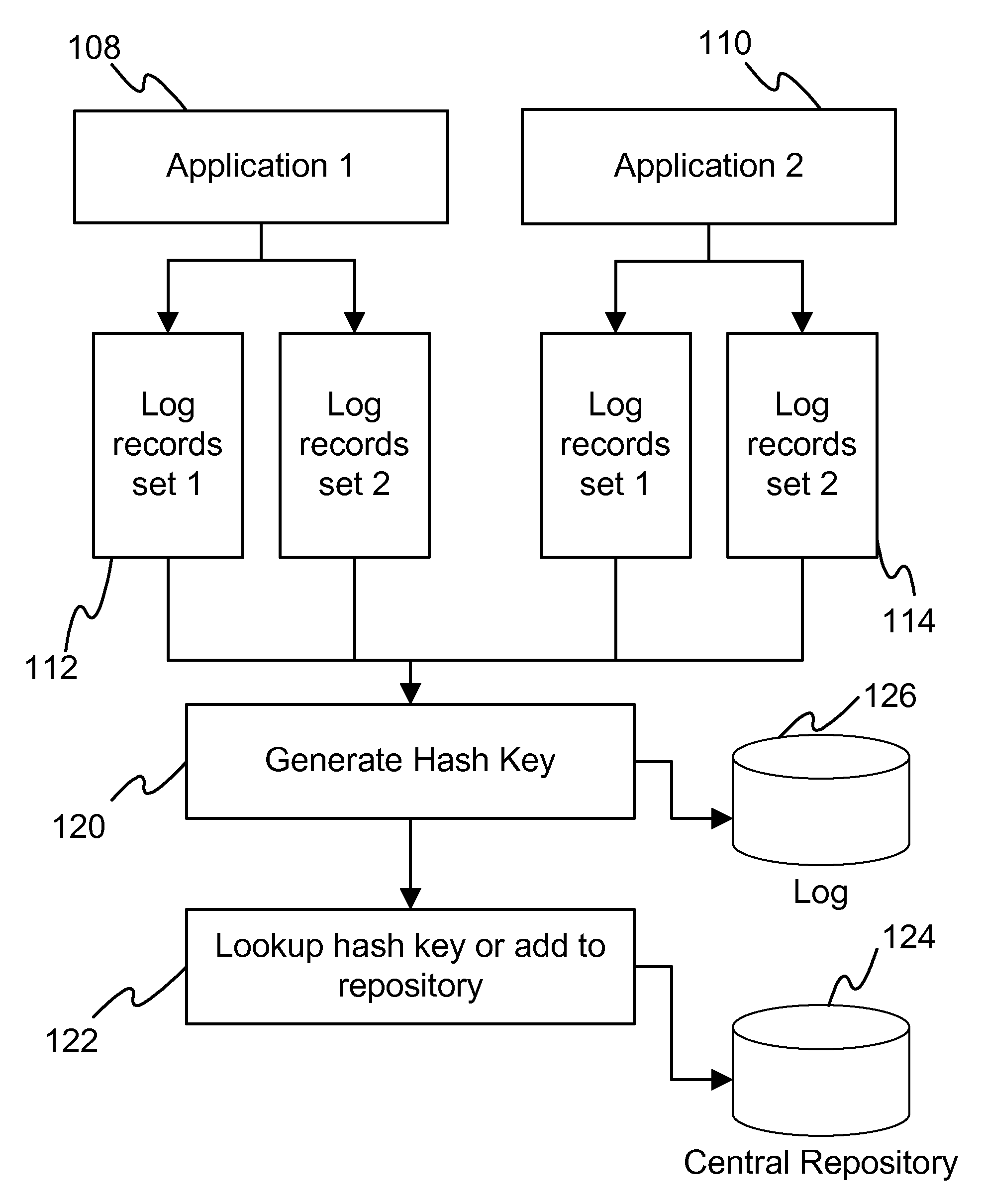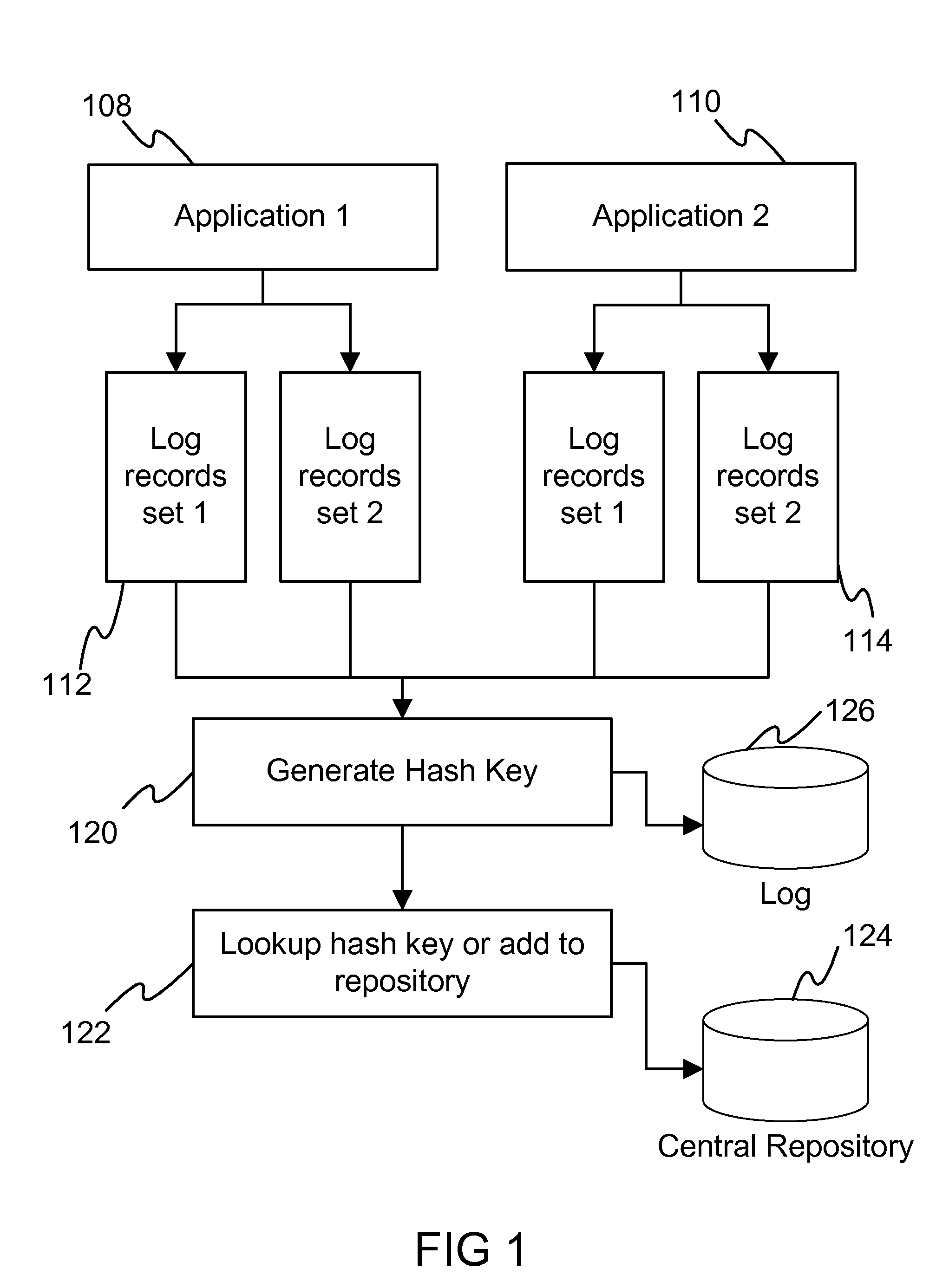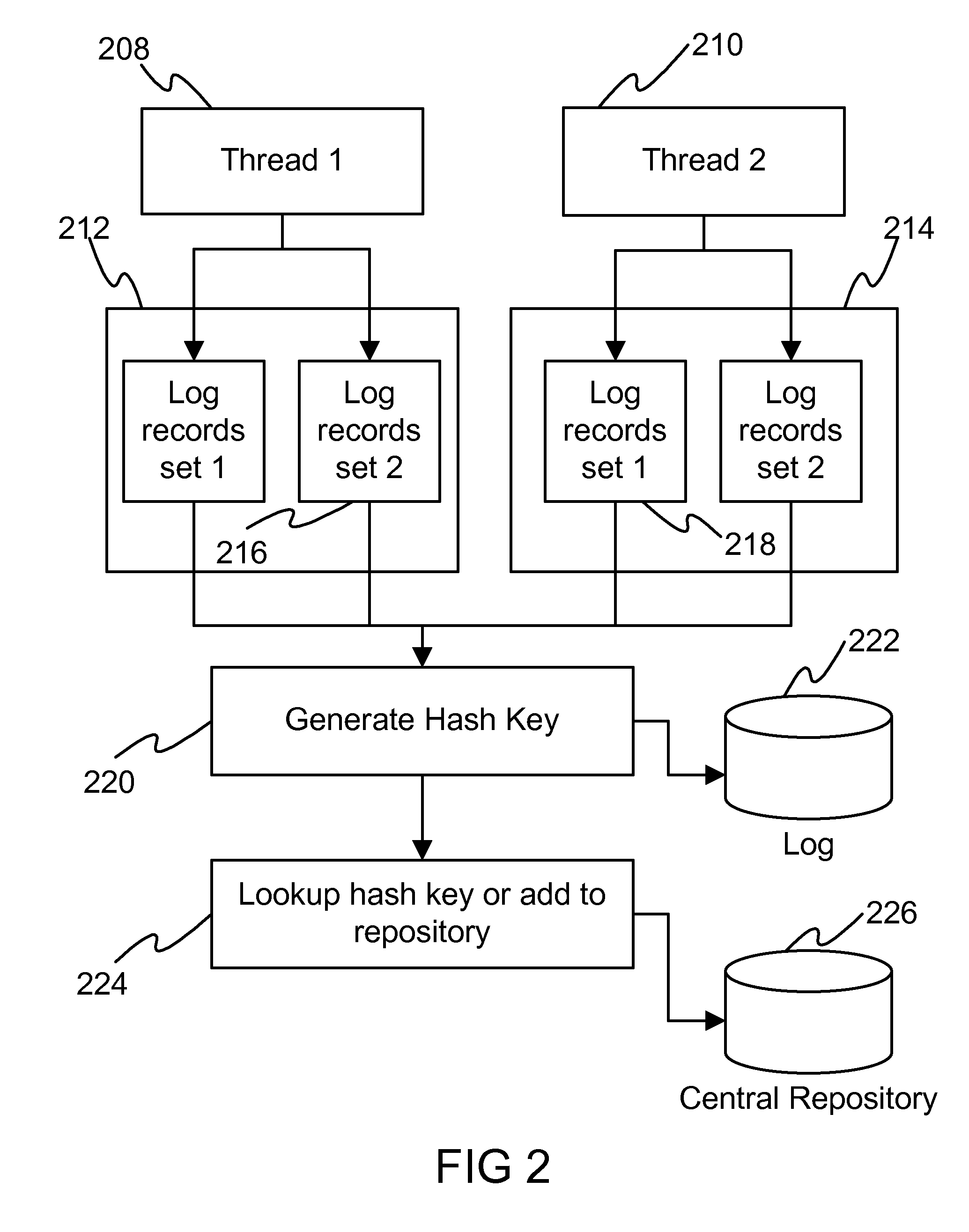Reducing log entries using hash keys
a technology of hash keys and log entries, applied in the field of reducing log entries using hash keys, can solve the problems of affecting the effective use of log entries, affecting the search effect, so as to reduce the size of the log file, the effect of small field and little storage spa
- Summary
- Abstract
- Description
- Claims
- Application Information
AI Technical Summary
Benefits of technology
Problems solved by technology
Method used
Image
Examples
Embodiment Construction
[0013]In an embodiment of the invention, log records are written during the execution of the programs. Developers generally make use of standard logging method in their applications. The simplest example of writing a log record is by calling the log() or trace() method on a Java or C++ class after the initialization of the class. Calling the log() method writes the corresponding parameter passed to the log file. The disclosure described in this document proposes the log records to be held in a vector, forming a set of log records that identify a particular execution flow in a program. This is explained with the help of an example, as shown below:
[0014]The typical way of writing flow of program execution as log records is as follows, e.g.:[0015]1>[0016]log(“line 1 to log”);[0017]2>[0018]log(“line 2 to log”);[0019]if then[0020]3>[0021]log(“line 3 to log”);[0022]log(“line 4 to log”);[0023]else[0024]4>[0025]log(“line 5 to log”);[0026]end if[0027]log(“line 6 to log”);
[0028]In an embodim...
PUM
 Login to View More
Login to View More Abstract
Description
Claims
Application Information
 Login to View More
Login to View More - R&D
- Intellectual Property
- Life Sciences
- Materials
- Tech Scout
- Unparalleled Data Quality
- Higher Quality Content
- 60% Fewer Hallucinations
Browse by: Latest US Patents, China's latest patents, Technical Efficacy Thesaurus, Application Domain, Technology Topic, Popular Technical Reports.
© 2025 PatSnap. All rights reserved.Legal|Privacy policy|Modern Slavery Act Transparency Statement|Sitemap|About US| Contact US: help@patsnap.com



